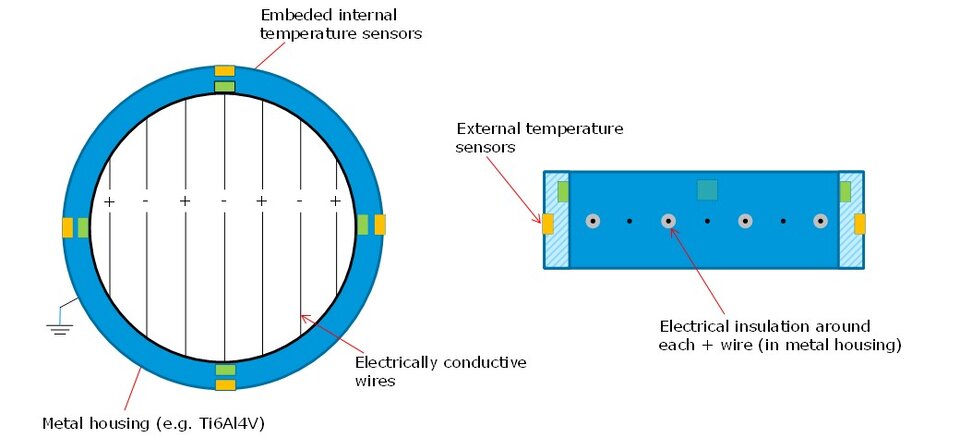Rocket Engine Internal Leak Detector
| 722 - Abstract: |
| The present invention consists of a leak detection device and the process for detecting and signalling leakage of space vehicle rocket engines. Two 2 detection approaches are integrated into a single device: electrical conductivity (electrodes that are bridged by leaking propellant completing an electrical circuit)and temperature measurement (thermal sensors that detect temperature drop due to flash evaporation of propellant) ESA is looking for partners who would be interested in implementing this invention and getting a license of the patent. |
Description:
Engine leakage is typically classified as a critical or catastrophic hazard due to the toxicity, corrosivity and energy potential of the propellants. Detecting leakage is the first step in the Fault detection, isolation, and recovery (FDIR) process. However, leak detection capability to date has had limited effectiveness. Two main approaches have been used for rocket engine leak detection: pressure decay and propellant evaporation temperature measurement, pressure decay being the most common approach.
However, both approaches have limitations: in the case of the pressure decay, engines must not be firing and temperature must remain stable for an extended duration to allow for measurement of the drop in propellant pressure using feed line pressure transducers. When measuring propellant evaporation temperature, the temperature sensors are mounted on exterior of fluid structure and thus provide limited fidelity, which can be also influenced by external environments.
The proposed invention addresses the shortcomings of previous approaches. It consists of a device which has an annular shape with an inner cylindrical segment forming a propellant flow passage. See Figure 1. This device is positioned at the outlet of the rocket engine flow control valve (FCV).
Detection via electrical conductivity:
- Electrically conductive wires extend across the flow passage.
- Liquid propellant droplets contacting 2 or more wires complete a circuit allowing a signal that indicates leakage.
- Electrically conductive wires are compatible with propellants (e.g. Titanium alloy, Stainless Steel, …)
- Insulative material isolates the positive conductive wires from the housing and is compatible with propellants (e.g. Teflon, Ceramics).
- The device is fully leak tight.
- The device is compatible with spacecraft engine environments.
Detection via temperature measurement:
- Like the approach used on manned space vehicles, this measures drop in temperature associated with propellant flash evaporation in vacuum.
- However, multiple temperature sensors are integrated into the device, near the internal surface and on the external surface. This allows detection of slight change in temperature inside and comparison with external temperatures to differentiate between a leak and temperature changes due to external sources.
This combined conductivity/temperature approach provides a much more reliable leak detection and avoids false positive indications.
Innovations and advantages:
This proposed device provides the following benefits:
- Allows for leak detection on each engine.
- Integrates into the engine flow control valve just downstream of the seal.
- Enables immediate detection of leakage during launch preparation and at any point in the mission.
- The use of two leak detection approaches in a single device allows for detection of propellant in the vapor and liquid state.
It improves mission safety and reliability by enabling detection of a fault. The fault can then be isolated before propagating and leading to critical or catastrophic consequences.
Domain of application:
This concept could be implemented on a large portion of ESA and commercial missions using a liquid propellant.


